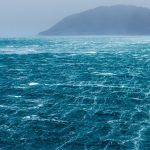 August 17, 2021 10:38 am
Published by Climate Extremes
August 17, 2021 10:38 am
Published by Climate Extremes
The ocean’s much larger heat capacity acts as “memory” suppressing the atmosphere’s “high-frequency variability” (over time scales of weeks) while producing oceanic motions that vary over longer time scales. This paradigm aims to explain how low-frequency variability emerges in the ocean. But, recently, this paradigm has been challenged.
 April 14, 2021 11:59 am
Published by Climate Extremes
April 14, 2021 11:59 am
Published by Climate Extremes
CLEX’s world-leading research in Oceans Extremes, particularly around marine heatwaves, explains why this research program has come into being as a standalone area of investigation amidst the rearrangement of the CLEX research programs.
 March 18, 2021 2:07 pm
Published by Climate Extremes
March 18, 2021 2:07 pm
Published by Climate Extremes
In this study, the researchers used a high-resolution numerical simulation of the cold tongue region to show that strong turbulent mixing occurs not only on the Equator, but also off the Equator on the edge of the cold tongue associated with passing energetic oceanic waves with periods of 15-40 days known as Tropical Instability Waves.
 March 5, 2021 1:19 pm
Published by Climate Extremes
March 5, 2021 1:19 pm
Published by Climate Extremes
CLEX researchers found coastal marine heatwave hotspots were concentrated along the Mediterranean Sea, Japan Sea, south‐eastern Australia and the north‐eastern coast of the United States. They also found the frequency of these events and their duration globally increased by 1–2 events per decade and 5–20 days per decade. Most of the marine heatwave hotspots identified were associated with high upward trends.
 November 23, 2020 3:08 pm
Published by Climate Extremes
November 23, 2020 3:08 pm
Published by Climate Extremes
Using ocean model simulations, this study demonstrates that the unusual behaviour of Indian Ocean temperatures over the past 60 years was mainly due to wind conditions.
 August 6, 2020 1:35 pm
Published by Jenny Rislund
August 6, 2020 1:35 pm
Published by Jenny Rislund
What would happen if we suddenly warmed the entire ocean at the sea-surface? Would suddenly cooling it down cause an equal and opposite response? Using ocean climate models we have carried out these and many more extreme experiments. The student will explore the asymmetric and often surprising behaviour of the ocean.
 August 6, 2020 1:17 pm
Published by Jenny Rislund
August 6, 2020 1:17 pm
Published by Jenny Rislund
This project investigates access pathways of the relatively warm water to the continental shelf by analysing output from a coupled ocean – sea ice model. The student will gain experience in polar oceanography and in the analysis and visualisation of large numerical datasets using python.
 February 11, 2020 4:25 pm
Published by Climate Extremes
February 11, 2020 4:25 pm
Published by Climate Extremes
In this work, CLEX researchers compared the performance of three ocean simulations – with low, medium and high resolutions – when representing marine heatwaves.
 September 3, 2019 11:06 am
Published by Climate Extremes
September 3, 2019 11:06 am
Published by Climate Extremes
CLEX researchers and colleagues examined the movement of surface water into the depths of the ocean in response to these wind changes using a global ocean model.
 March 25, 2019 4:59 pm
Published by Climate Extremes
March 25, 2019 4:59 pm
Published by Climate Extremes
Marshall Ward (NCI) gives an overview of Payu, a tool for running ocean and coupled models on Raijin.










